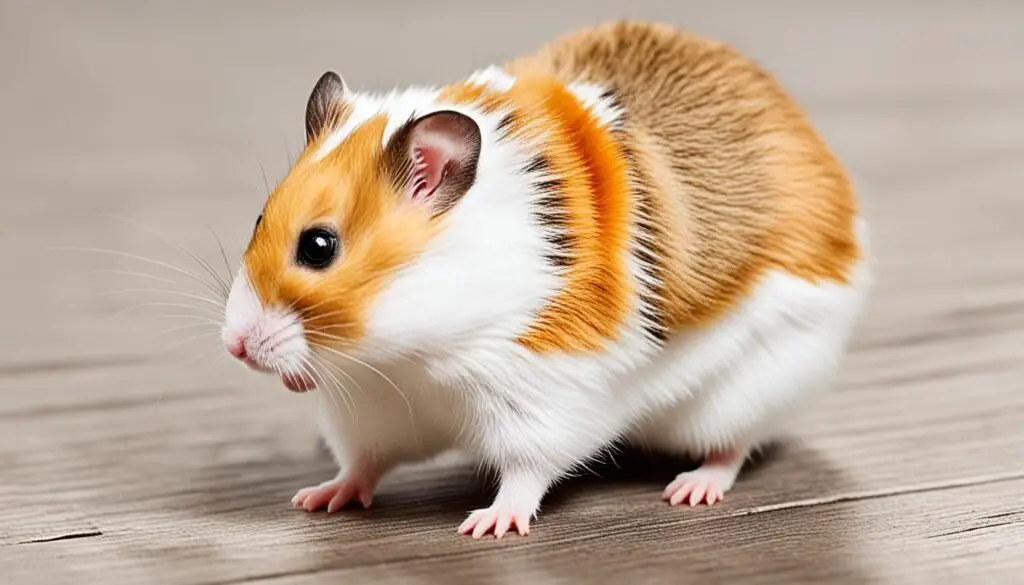Imagine the joy of watching your adorable little hamster scurrying around its cage, exploring every nook and cranny with nimble movements. But then, something changes. You notice that your furry friend is no longer able to walk properly. Maybe they’re limping, stumbling, or even dragging their hind legs. It’s a heartbreaking sight, and you feel helpless, not knowing what could be causing their mobility issues.
In this article, we will explore the possible causes behind why your hamster can’t walk properly and provide you with valuable tips on how to help them regain their mobility. Whether it’s hamster leg paralysis, scurvy, vestibular problems, or aging-related issues, we’ve got you covered. Let’s dive in and find the answers you need to ensure your precious hamster’s well-being.
But first, let’s take a moment to reflect on how important your furry friend is to you. Remember all the joyful moments you’ve shared together, the way their tiny paws tickle your fingers, and their sweet little face that brightens your day. Your hamster’s happiness and health matter, and we’re here to guide you through this difficult time.
Vestibular Problems in Hamsters
Hamsters, adorable little pets, can sometimes experience hind leg weakness, coordination problems, and stiffness. These issues may indicate vestibular problems, which affect the balance and coordination of your furry friend. When hamsters have vestibular problems, they may exhibit symptoms such as stumbling, tilting of the head, and wobbling while walking.
These vestibular problems are usually caused by infections in the ear or tumors in the ear part of the vestibular system, as well as brain damage. Common causes include ear infections, which can be treated with antibiotics, and tumors, which may require additional treatment.
If your hamster is showing signs of hind leg weakness, coordination problems, or stiffness, it’s important to take them to a vet for proper diagnosis and treatment. The vet will be able to determine the underlying cause of the vestibular problems and provide appropriate care.
Remember, early intervention is key in helping your hamster regain their mobility and lead a happy and healthy life.

Cage Paralysis and Hind Limb Paralysis in Hamsters
Cage paralysis and hind limb paralysis are two common conditions that can affect a hamster’s hind legs. Both of these conditions can cause hamsters to experience various symptoms, including loss of use in their hind legs, stiffness, dragging of the back legs, and difficulty moving. These issues can significantly impact a hamster’s mobility and overall quality of life.
Cage paralysis is often caused by a lack of exercise and obesity, which can lead to muscle and bone degeneration. Hamsters that spend most of their time in small cages without ample space to move around may develop muscle weakness and experience difficulties using their hind legs. Providing more exercise opportunities, such as a larger enclosure or an exercise wheel, can help prevent and treat cage paralysis. Additionally, ensuring a hamster maintains a healthy weight through a balanced diet is essential.
Hind limb paralysis, on the other hand, can have various causes. It may result from spinal cord injuries, bacterial infections, or even hereditary traits. Hamsters with hind limb paralysis may experience complete or partial loss of movement in their hind legs, which can be distressing for both the hamster and their owner. Treatment for hind limb paralysis depends on the severity of the condition and may include painkillers, anti-inflammatory medication, physical therapy, or in severe cases, euthanasia may be recommended by a veterinarian.
Tips for Helping Your Hamster Regain Mobility
If your hamster is experiencing walking problems or mobility issues, it’s crucial to address the underlying cause. For hamsters with leg injuries, create a comfortable and safe environment for healing. Ensure their habitat is clean and provide soft bedding to prevent further injury.
If the walking problems are related to scurvy or a vitamin deficiency, make sure your hamster is receiving a balanced diet with sufficient vitamin C. Consult a vet for diagnosis and treatment of vestibular problems, which can affect your hamster’s coordination and balance.
Dehydration-related mobility issues can be relieved by providing ample water and ruling out hibernation. For aging hamsters, create a comfortable and enriching environment to support their natural aging process. Regular vet visits can help monitor and address any mobility concerns your hamster may have.
